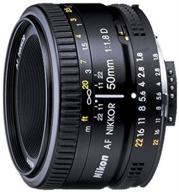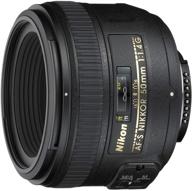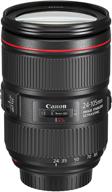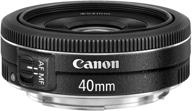
Review on 📷 Sony FE 24-105mm F4 G OSS Standard Zoom Lens (SEL24105G/2) - Professional Grade Photography Equipment by Alexis Sanchez

Simple comparison 24-70/2.8 GM and 24-105/4 - both great but it's all about comfort
First I bought a 24-70/2, 8 GM lens. That is hard. Very difficult. There is no balance with the body and I have to strain my wrist to hold it. I bought a Peak Design clutch and it has made a huge positive difference. As I was preparing for a family trip, I found that the camera with the lens attached would not fit in my 5 liter bag. The frame and the length of the lens were too big. I packed the camera and lens in my backpack and off we went. At the end of the day my back hurt and my arms were tired. It's so heavy (or rather, so unbalanced that it puts a strain on my wrist). I've only done a few portrait shots of my family and found I usually use F4 or less. To update to 2.8 I had to manually change the program settings. The photos are amazing but the camera was so heavy I got tired of using it the next day. Instead, I used my iPhone. That's when I found out why Sony offers 24-70/2.8 GM and 24-105/4. It's all about the trade-off between portability and shallow depth of field. I bought the 24-105/4 to use as a field vision lens. It's much lighter, much shorter and smaller in diameter. With a smaller camera bag, it travels much easier. The weight is much more balanced and sits lighter on my wrist making for much more comfortable shooting throughout the day. The extra telephoto range also comes in handy for looking around, as many museum exhibits are beyond the reach of a 70mm lens, but I still need a 24mm for family group shots. Knowing this, I do the following. The 24-70/2.8 is my portrait lens and I will use it when shooting close subjects in darker, short duration conditions. The 24-105/4 is my go-to lens for travel and sightseeing. Both have a purpose. But now that I've said all that, consider this - I also have an 85/1.4 GM which can easily substitute a 24-70/2.8 for portraits, and I have an 18-35/2, 8 GM lens. which can replace the 24-70/2.8 GM for wide-angle nature photography. According to some parameters, the 24-70/2.8GM lens is no longer needed and can be sold. If I were starting from scratch I wouldn't buy a 24-70/2.8 GM. One final note: I have a 70-200/4 lens and love it for its lighter weight and better balance than the 70-200. /2.8 gp. I know I'll lose aperture, but I doubt I'd use a lens that puts too much pressure on my wrist. In summary, GM lenses are considered to be the best lenses. They have a higher price, heavier weight and longer length, which reduces their portability and ease of use. Before you think that only the best lens will suit you, think about the ergonomics and strength of your wrist. You may find that the best lens is the one that best suits your personal needs.
- Always liked
- Not as good as it says
New products
Comments (0)
Top products in 👓 Lenses

Nikon 50mm f/1.8D Lens: Perfect for Nikon DSLR Cameras!

97 Review

📷 Nikon AF-S NIKKOR 50mm f/1.4G Lens with Auto Focus: Perfect for Nikon DSLR Cameras

76 Review

Black Canon EF 24-105mm f/4L IS II USM Lens - Model 1380C002

78 Review

Canon EF 40mm f/2.8 STM Lens - Fixed Black (6310B002) for US Cameras

76 Review






